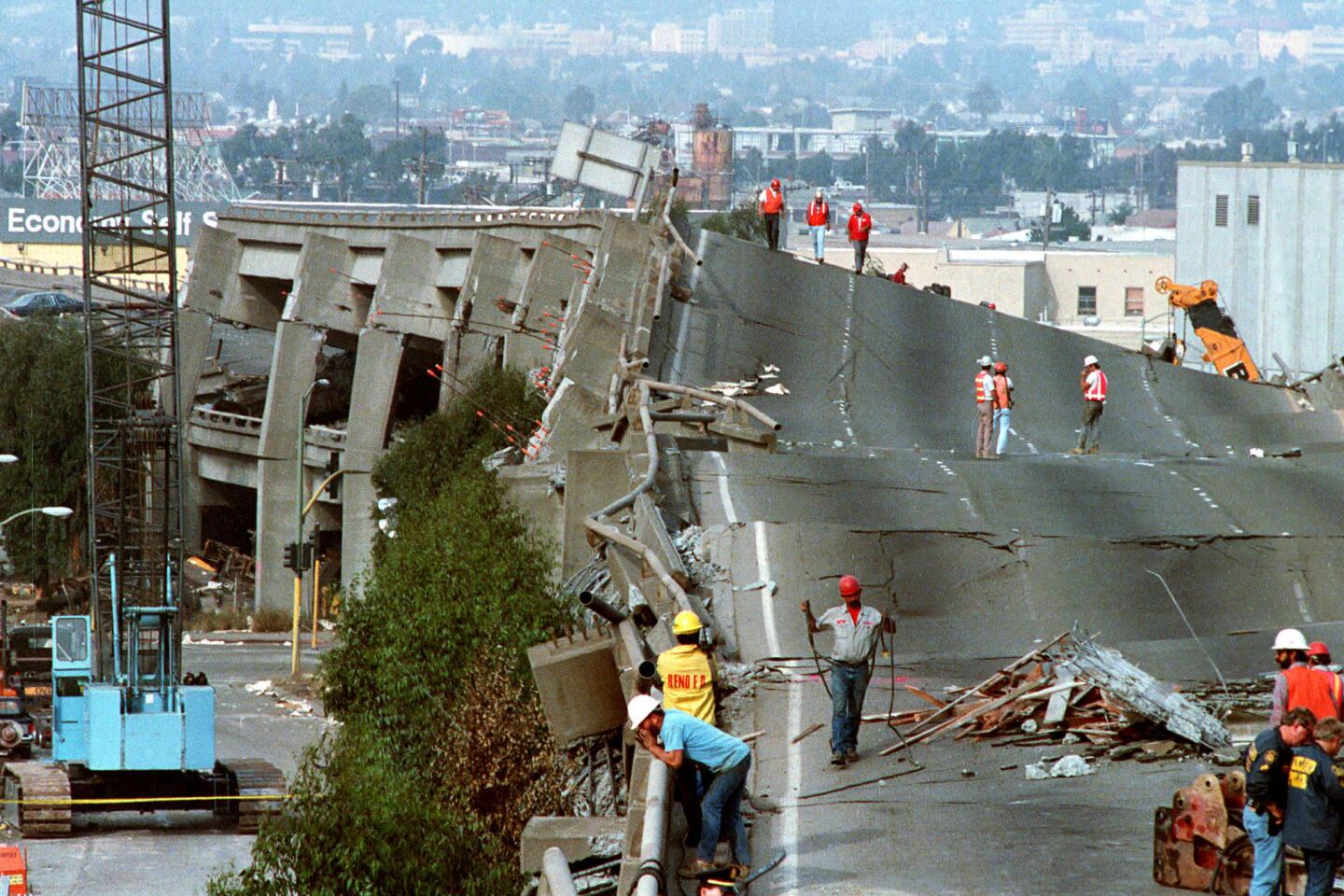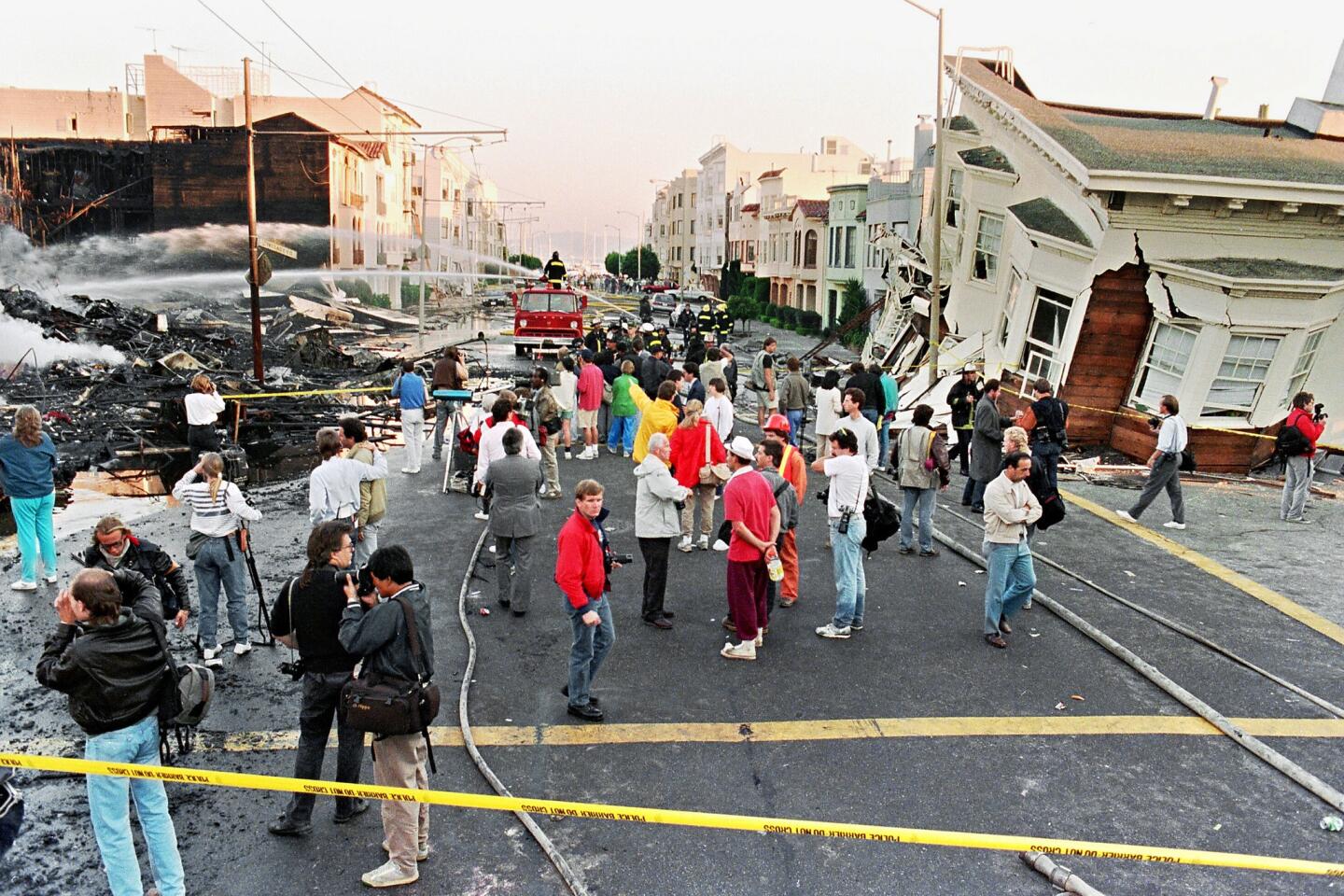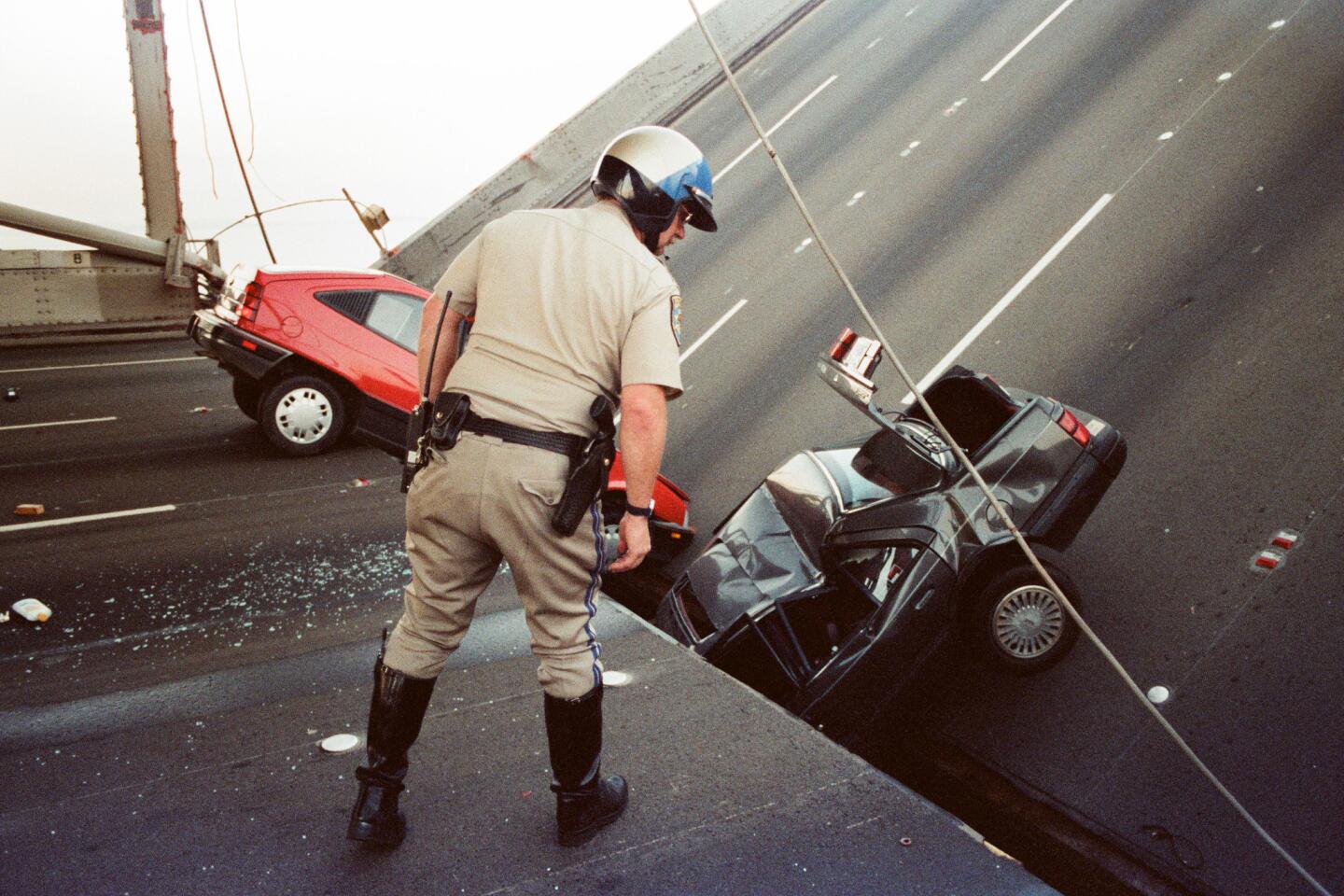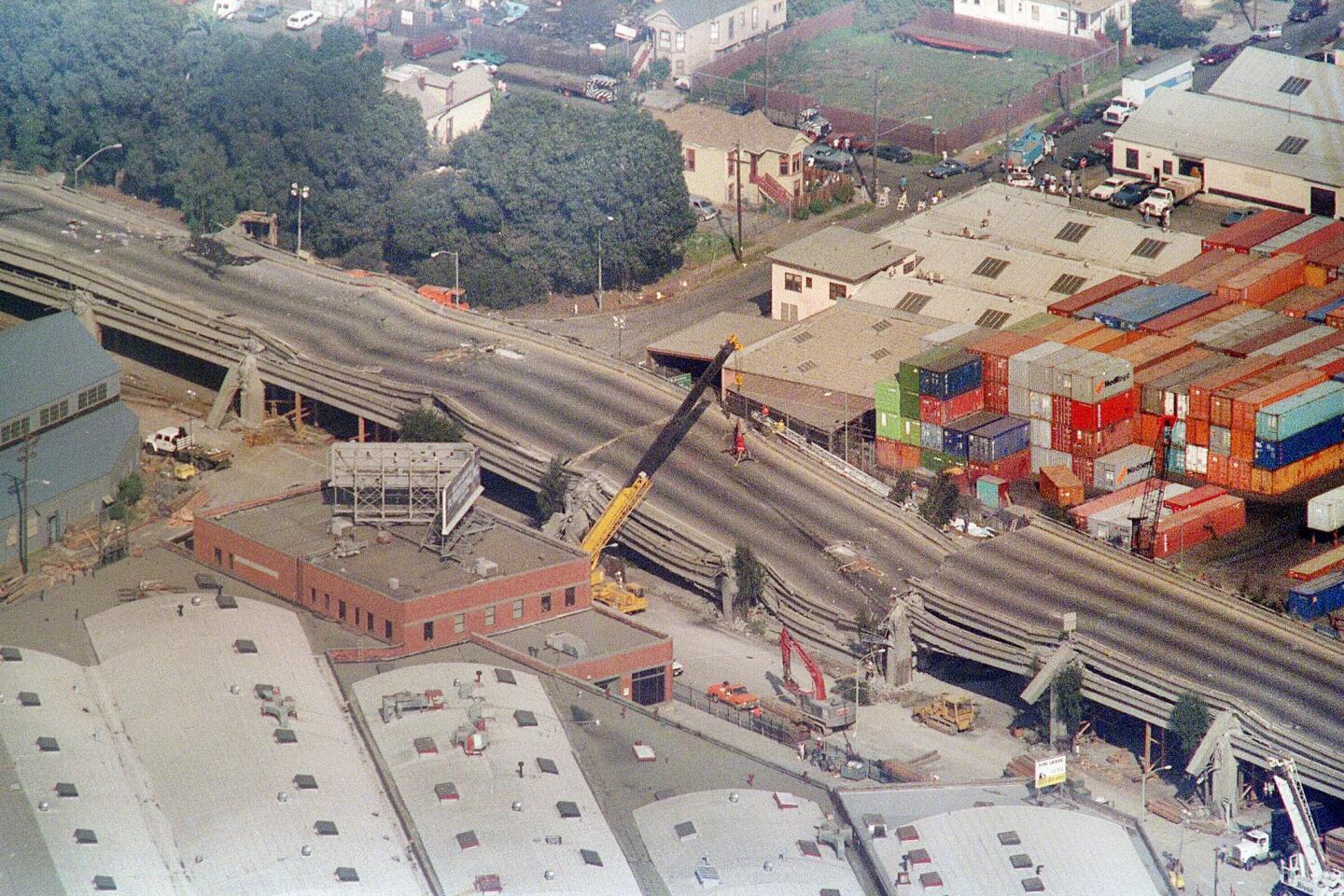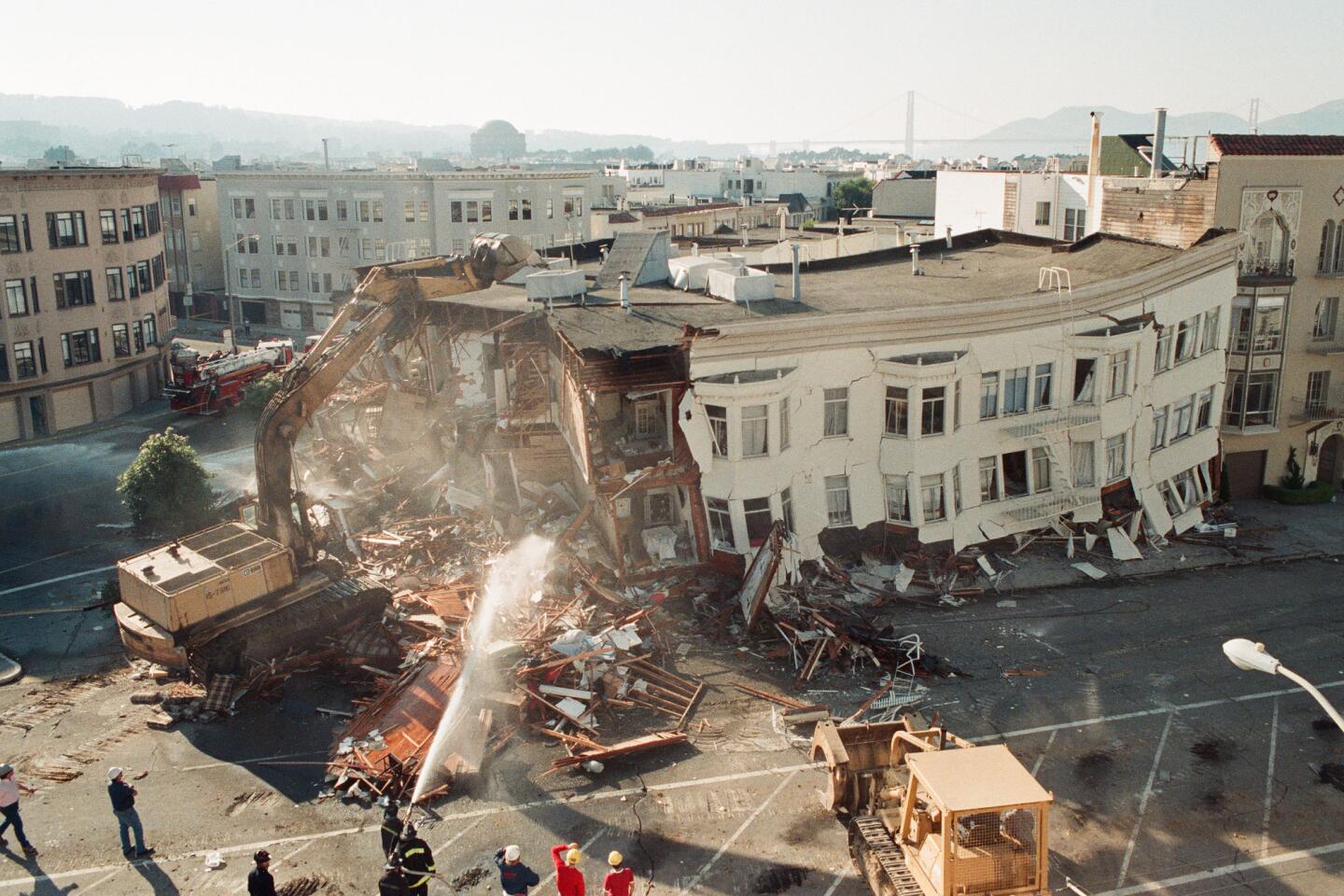Earthquake warning app will give anyone in California the chance to prepare
At 5:04 p.m. 30 years ago today, the ground shook under the Santa Cruz Mountains.
It took about six seconds for the energy to hit Santa Cruz, about 15 to 20 seconds to get to San Jose and 30 to 35 seconds to get to the northern edge of San Francisco. As a World Series game was getting underway at Candlestick Park, the shaking began to collapse a portion of the San Francisco-Oakland Bay Bridge and flattened a double-decker section of Interstate 880 in Oakland.
In 1989, there was no way to warn residents that the shaking from one of Californiaâs most destructive earthquakes was on its way. That robbed millions of people of precious seconds to prepare.
Officials aim to make sure that wonât be the case with a future quake. On Thursday, the California Governorâs Office of Emergency Services will unveil an app created by UC Berkeley that will give all Californians who download it on iOS and Android phones the chance to get earthquake early warnings from any corner of the state.
Authorities will also begin issuing quake early warnings through the Wireless Emergency Alerts system, offering text message alerts even for people who have not downloaded the app.
The unveiling of the new version of UC Berkeleyâs MyShake app is a major achievement in the years of efforts to bring California an earthquake early warning system. Until Thursday, only people with the city of Los Angelesâ ShakeAlertLA app and physically present in Los Angeles County could get the alerts.
Richard Allen, director of the Berkeley Seismology Lab, said a few seconds of warning can give people time to drop, cover and hold on before the shaking begins.
A repeat of the 1989 earthquake could give perhaps 20 seconds of warning to the Marina District in San Francisco, which saw major fires, apartment collapses and deaths; the former site of Candlestick Park would get perhaps 15 seconds of warning, as itâs a bit closer to the epicenter; San Jose might get a few seconds. The city of Santa Cruz was too close to the epicenter and probably wouldnât get a warning.
The idea of earthquake early warnings has been around for a while; even after the magnitude 7.9 earthquake in 1906, a proposal was printed in the San Francisco Chronicle for a system that would sense quakes and send alerts by telegraph ahead of the shaking.
One of the first practical tests of the concept in California came after the Loma Prieta quake. Scientists devised a system to use sensors near the epicenter in the Santa Cruz Mountains to radio in alerts to rescue workers searching for survivors and victims about incoming shaking 60 miles away. The idea was to get the rescue workers an alert about a significant aftershock before the shaking hit. The system was in operation for six months and sent 12 warnings.
Officials say that the MyShake app is a prototype and that there could be bugs that need to be fixed; itâs possible that warnings could be delayed or come late, and there is always the possibility of false alerts or missed warnings. But Allen said the app is now good enough that theyâre confident it will save lives, and distributing the app more widely is more helpful than keeping it away from the public.
âWe cannot promise you a perfect system,â Allen said, but based on tests, âthe system seems to be performing reasonably well.â The MyShake appâs systems operate in the cloud, and it was built to scale up to meet demand.
Scientists initially thought it wise to alert users only of incoming shaking from an earthquake that would cause damage, but many L.A. County residents were upset when they did not receive warnings about Julyâs Ridgecrest quakes, which delivered scary shaking but no damage to Los Angeles.
Based on that reaction, officials are calibrating the MyShake app to ring an alarm on cellphones when shaking is expected to be felt by people indoors, but isnât recognized by many others as a quake. Thatâs known as intensity level 3 on the Modified Mercalli Intensity Scale and matches the new threshold set by ShakeAlertLA in the weeks after the Ridgecrest quakes.
At this level of shaking, the earthquake is typically felt quite noticeably by people indoors, especially on upper floors of buildings, and may feel to some like the vibration of a passing truck. But officials thought it wasnât a good idea to send warnings for shaking at intensity level 2, which most people wonât feel.
âWeâre trying to find that sweet spot,â said Ryan Arba, branch chief for seismic hazards for the Office of Emergency Services.
Text messages over the Wireless Emergency Alerts system will be sent only when light shaking, at intensity level 4, is expected in an area â a level at which many are aware of the shaking, walls make cracking sounds and doors, windows and dishes are disturbed. Level 4 shaking was felt widely in L.A. County when the magnitude 7.1 earthquake struck Ridgecrest more than 100 miles away.
Gov. Gavin Newsom, who was in the Marina District when the 1989 quake toppled apartments and sparked fires, urged people to download the app if they have a smartphone.
âNothing can replace families having a plan for earthquakes and other emergencies. And we know the Big One might be right around the corner. I encourage every Californian to download this app and ensure your family is earthquake ready,â he said in a statement. Newsom plans to formally unveil the new app at an event Thursday in Oakland that will be streamed live.
Officials plan to turn on the capability of the MyShake app to transmit earthquake early warnings around 11 a.m., when the governor is set to begin the news conference.
Initially, officials thought text messages over the Wireless Emergency Alerts system would be too slow to be useful. Tests conducted in a small neighborhood in Oakland this year and in San Diego County show that text messages can be received anywhere from four seconds to a minute after they are sent, meaning some people would get a timely alert about shaking, but others might not.
Thatâs why officials are urging smartphone users to download the app, which will also have educational materials.
Brian Ferguson, an Office of Emergency Services spokesman, said officials will work to improve the system and its speed but didnât want to delay the rollout of the app, as imperfect as it might be, âif we can save even one life. Itâs important for us to get it out.â
UC Berkeley has been working on a couple of apps related to earthquake early warnings for years; the first version of MyShake, launched in 2016, was designed as a research experiment to allow users to send shaking data from their smartphonesâ motion sensors to researchers. Campus scientists were separately testing an app privately to send out alerts. The two ideas were combined into one with the release of the latest app.
The Office of Emergency Services said it has funded the program since June with $1.5 million over two years after five years of start-up funding from the state and private foundations, including the Gordon and Betty Moore Foundation. Lawmakers set aside more than $7 million in this yearâs budget to promote the app, and they hope to have 4 million people download the app by the end of 2020.
The MyShake app alerts rely on the U.S. Geological Surveyâs backbone ShakeAlert earthquake early warning system for the West Coast, which has received greater financial support from state and federal elected officials in recent years. It relies on hundreds of sensors installed throughout the state; officials are still working on installing hundreds more sensors in rural areas of California, as well as in Oregon and Washington.
More to Read
Sign up for Essential California
The most important California stories and recommendations in your inbox every morning.
You may occasionally receive promotional content from the Los Angeles Times.
